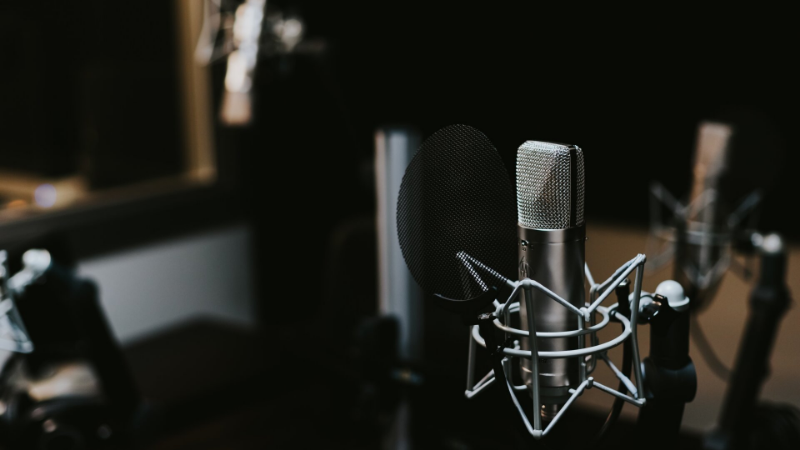
Hitting record for the first time is the moment you’ve been waiting for. You’ll certainly want to capture an inspired vocal performance and doing that will require a little bit of preparation and know how. I’ll do my best to help you with both. First things first, We’ll need the perfect recording microphone for vocals.
So, What is the the perfect recording microphone for vocals?
The optimal choice for recording vocals is a condenser microphone. More Specifically, a condenser microphone with a large diaphragm. The large physical size of the diaphragm lends to wider frequency response. This ultimately results in the lush sounding vocals condenser microphones are known for.
So now that we’ve equipped ourselves with that insight. let’s familiarize ourselves a little more.
Condenser Microphones are built with precision.
When you sing into the microphone the variance of sound pressure and sonic frequencies go racing to collide against the large diaphragm. Then, In turn, The Diaphragm ebbs back and forth with the comings and goings of that sound pressure. Those movements are measured in relation to a fixed back-plate directly behind it. This is done with electricity; an electric charge is applied to the diaphragm and back-plate. When the diaphragm fluctuates it causes a change in electrical capacitance and is finally interpreted as electric signal.
Pretty cool, right?
I’m sure you’re starting to see the advantage of a large diaphragm; it seems to me that it must be like fishing with a bigger net.
The lightweight and delicate design of the diaphragm, allows it to move along and represent the ever-changing pressure with an exactness that a dynamic microphone simply cannot.
A dynamic microphone can be used to record vocals of course. It’s just that more often then not, this technic is used to achieve some sort of artistic expression.
The condenser Mic is notably more responsive and sensitive to sound. Which makes it the superior choice for recording vocals as well as over all sound quality.
In addition to having the widest frequency response the condenser mic also has excellent transient response.
This makes them useful for capturing drum strikes as well as acoustic guitar picking.
Phantom Power
Wow!?! Phantom what?
Don’t worry, it sounds more terrifying then it really is.
Condenser Microphones require 48V of power to operate; this is the so-called “phantom power.”
What is scary is how anti-climatic that was…
This 48V of power will either be delivered via battery but more then likely it will be from the Audio Interface or Mixing console.
Don’t worry; you won’t need any extra cables. Your XLR will do the trick and just like salmon, the 48v runs back up river to the microphone.
Giving us yet another reason to hug a scientist!
Because we live in the future now, all audio interfaces and mixing desks should be equipped with a toggle switch to deliver said power. But for the sake of prudence be sure to verify that anything you buy has all the functionality you need
So then how is that compared with the small Diaphragm Condenser Microphone? you ask.
Ok, you didn’t ask, but seeing as how we’re boot-stuffing knowledge into there, don’t stop me now.
Small Diaphragms are not as well versed at picking up lows and low mids as their bigger sibling. They are however a lot better equipped for capturing the top end so they do particularly well with recording instruments of brighter tonality.
Large Diaphragm Microphones worthy of Consideration
This list is a starting point to introduce you to a few recommendable solutions. They vary in price and that in most cases is reflective of quality. I currently have and use a Neumann TLM 103. For me that is a very happy medium. I recommend that you explore these and other options to find a perfect recording microphone for yourself.
- Neumann U 87 Ai Switchable
- Neumann TLM 103
- Neumann TLM 102
- AKG Pro Audio C414 XLII, Multi-pattern
- AKG Pro Audio C214
- Avantone Audio CV-12
- Audio Technica AT2035
Making a choice
Picking up the perfect recording microphone will set you back a little coin. But it is a centerpiece tool, so if you can, stretch a little bit. The next time you have the luxury of visiting a music superstore ask a sales associate for detailed information and to help you A-B a few options.
Remember not all microphones fit equally. Over the years I’ve had the opportunity to audition a lot of very high-end microphones some of which did not represent my voice in a way that was pleasing to my ear. If you’re a singer-songwriter type like I am and you can only afford one purchase I highly recommend you find the shoe that fits. To do that accurately requires you auditioning the possibilities.
But if a trip to a mega-store is simply out of the question, grab a trustworthy pair of headphones and listen in to some online comparison demos. That may give you the insight you need to make your choice.
Keep in mind that a brand new microphone may indeed be shiny, but it is no silver bullet. You’ll certainly have to dig in for the battles in front of you. You’ll have to work hard every day to improve your proficiency.
An alternative solution to buying or perhaps just a more thorough means of auditioning a particular microphone would be short-term rental. Have a look into renting high-end Audio Equipment Rentals online or in your area; it may be a very realistic way to afford using a more cost prohibited microphone on your recording.
Shock-mount
If you do use a condenser microphone, you’ll need a shock-mount. But don’t worry most come packaged with one at the time of purchase.
If you are buying second-hand be sure to clarify with the seller about whether the mount will be included.
What makes a shock-mount valuable is its ability to reduce the noise from handling the microphone. The shock-mount will also aid in negating other room vibrations.
If for any reason your microphone doesn’t have one, I’d advise picking up a generic one online. Be sure to verify that it will fit your microphone before you click buy.
Mic Stand – Boom Arm
You must also collect yourself a microphone-stand with a boom arm. The boom arm will separate you from the mic stand just enough to reduce any unwanted collisions between you and it. You can expect your microphones shock-mount to have a standard mounting bracket for an easy connection to what ever Mic Stand you choose.
If you’re not in a position to have separation from you and your computer when you are tracking you may also consider a boom arm that clips to your desk. In any event I recommend this for making demo recordings or during the songwriting phase. It’s very convenient to swing the mic in and out to capture inspiration as it strikes. Personally, I find that convenience tantamount for the songwriting-production phase of the project.
Pop Screens
They say necessity is the mother of invention and the invention of Pop Screens was no exception. Pop Screens or Pop Filters, are used to protect the diaphragm from “explosive” pops. As we’ve already discussed the large diaphragm of a condenser microphone is as delicate as it is sensitive.
So a Pop Screen is a must have tool to avoid recording unwanted popping sounds caused from articulating words beginning with the letter “P” directly into the Microphone. This tool is widely available and inexpensive, but if you’re ever in a pinch you can try doing as the early adopters did. Grab a coat hanger and a pair of your favorite pantyhose. Then macgyver yourself some protection. Be sure to make the metal ring nice and big, then double-ply the panty hose over that and you’re set. Now that’s old school.
When you’re ready to affix your pop screen to the microphone stand be sure to place it about 4 inches (10cm) away from the Mic. To avoid any reflections angle the pop screen slightly.
If you’re into flashy things, the latest iterations of pop filters are made of perforated metal mesh. I just bought one. Flashy.
Acoustic Isolation Shield
If you’re forced to use a desk clamped boom arm to record your final take. At the very least I’d recommend picking up some sort of an acoustic isolation shield. It may pay a significant dividend in helping to mitigate noise bleed from the computer and other electrical devices
A Little Friendly Inspiration
So now that I’ve done my level best instilling you with the confidence that a large diaphragm microphone is exactly what you need to record pristine vocals, Ill leave you to your own devices. But before I go…
Remember that progress makes perfect and doing perpetuates something.
The most important thing now is putting one foot in front of the next and wrestling your level up. We’ve given ourselves a little better understanding of the technology behind all of this and we’ve familiarized ourselves with the corresponding components.
Goodluck
Go find the perfect recording microphone and enjoy every minute.
